The Sieving Lab: Avian Ecology and Conservation
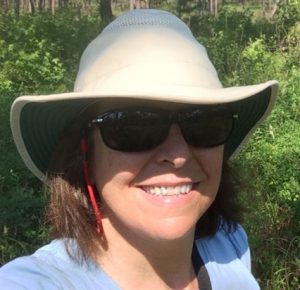 Kathryn E. Sieving (Katie)
Kathryn E. Sieving (Katie)
Department of Wildlife Ecology & Conservation
University of Florida, Gainesville
B.Sc. Wildlife, Fish, & Conservation Biology, University of California Davis
Ph.D. Ecology, Ethology, & Evolution, University of Illinois Urbana-Champaign
For my publications, please see Google Scholar
Conceptually rooted in behavioral, community, landscape and evolutionary ecology, my lab focuses on avian ecology and behavior with a central focus on the behavioral mechanisms underlying human-bird-environment interactions. Recent research in my lab addresses:
- Conceptual frameworks and applications of mixed species flocking
- Avian acoustic and communication ecology; especially of family Paridae
- Noise, predation risk, and habitat loss effects on avian behavioral, population and community ecology
My lab philosophy is ‘effective conservation science is via rigorous research design’. Conservation scientists must work and learn efficiently while maintaining scientific standards at the highest level. I specialize in scientific logic, conceptual framing, and sampling design for rigorous field approaches to empirical ecology. My graduate students' interests take the lab in their directions, but I maintain continuity of interest and progress in my anchor programs. My philosophy of mentoring - ‘it’s your degree and future - take the reins!’ I am honored to learn from my students as they build their research programs.
Sieving Lab - Anchor Research Topics
Animal Information Landscapes
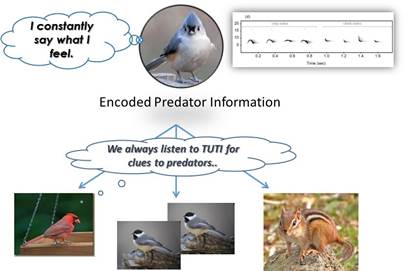
When the titmouse speaks, everybody listens!
We’ve discovered that the Eastern Tufted Titmouse (family Paridae) encodes a high diversity of reliable and distinctive information about predation threats they perceive in their alarm calls and other vocalizations (including their chip calls). Many other species not only know the titmouse code, they change their behaviors in accordance with the degree of threat conveyed in those calls. We are exploring many aspects of parid ‘info-scapes’. See Publications list. This work has been funded by National Science Foundation; University of Florida; Animal Behavior Society; others.
Behavioral Landscape Ecology of Forest Animals
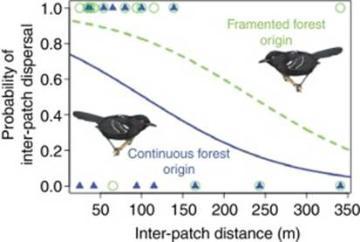 Principles of Behavioral Landscape Ecology...
Principles of Behavioral Landscape Ecology...
... are fundamental to understanding the distribution and viability of wildlife populations. Behavioral mechanisms help determine spatial distributions of animals and their responses to landscape change (short and long term) and disturbance. We use behavioral ecology to understand animal movements, activities, and distribution in disturbed landscapes. We have found that landscape connectivity is defined by a species’ behavioral perceptions of risks and rewards in spatial decision-making, and is greatly influenced by spatial configuration of habitat and also what other species are doing nearby at local and landscape scales. See Publications. Figure is from Cornelius et al. 2017. This work has been funded by NGS; NSF; USP; Disney; UF; Animal Behavior Soc; Conservation Leadership Program; US Fish & Wildlife Service; others.
In the media: lasers, tapaculos & truffles, traffic-agitated bluebirds...
- Vocal Complexity of Paridae (1) (2) (3) (4)
- Bluebirds in Human Landscapes (1)
- Chilean Tapaculo Ecology/Conservation (1) (2)
- Laser Scarecrows (1) (2) (3) (4) (5) (6) (7)
The Sieving Lab Today
- Po-An Chen, PhD, SNRE/WEC (major advisor). Food calls of Paridae at feeders and how social context influences their production metrics.
- Suyash Sawant, PhD, SNRE/WEC (major advisor). Flock social and vocal complexity variation across gradients, and analytics for acoustic analyses.
- Jackson Barratt Heitmann, PhD, WEC (co-advisor). Large and small-scale contributions of isolated wetlands to biodiveristy; big data approaches to ecology.
- Brittaney Buchanan, PhD, BIO (co-advisor). Evolution of acoustic differentiation in quail.
- Nicholas Martin, PhD, UF Entomology (collaborator). Avian recognition of plant-based aposematism in moth larvae.
- Michael Daire, BSc. Mobbing birds' perceptions of predation risk.
- Zion Szot, BSc. Effects of ALAN/ANAN on avian aggression.
- Emily Turoff, BSc. Nest defense aggression in bluebirds and traffic noise around the nest box.
- Megan Caufman, BSc. How traffic noise affects nest attendance behavior in bluebird pairs.
Study Species of the Sieving lab
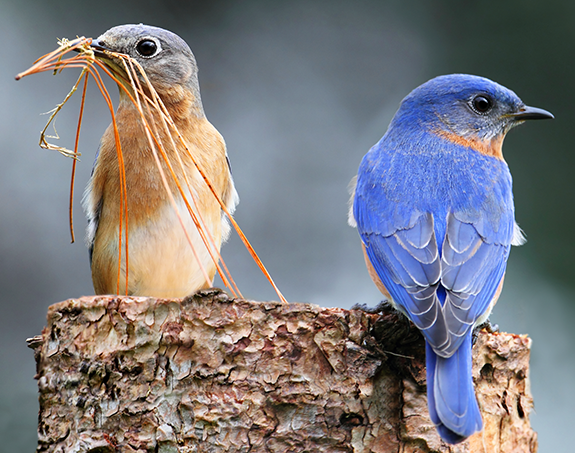
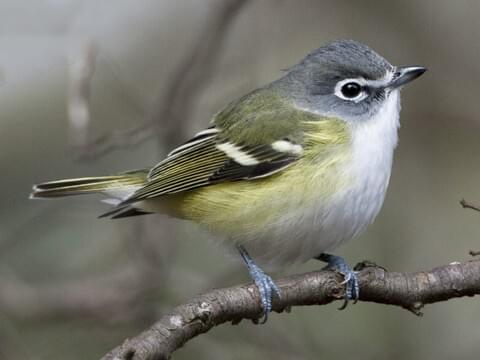
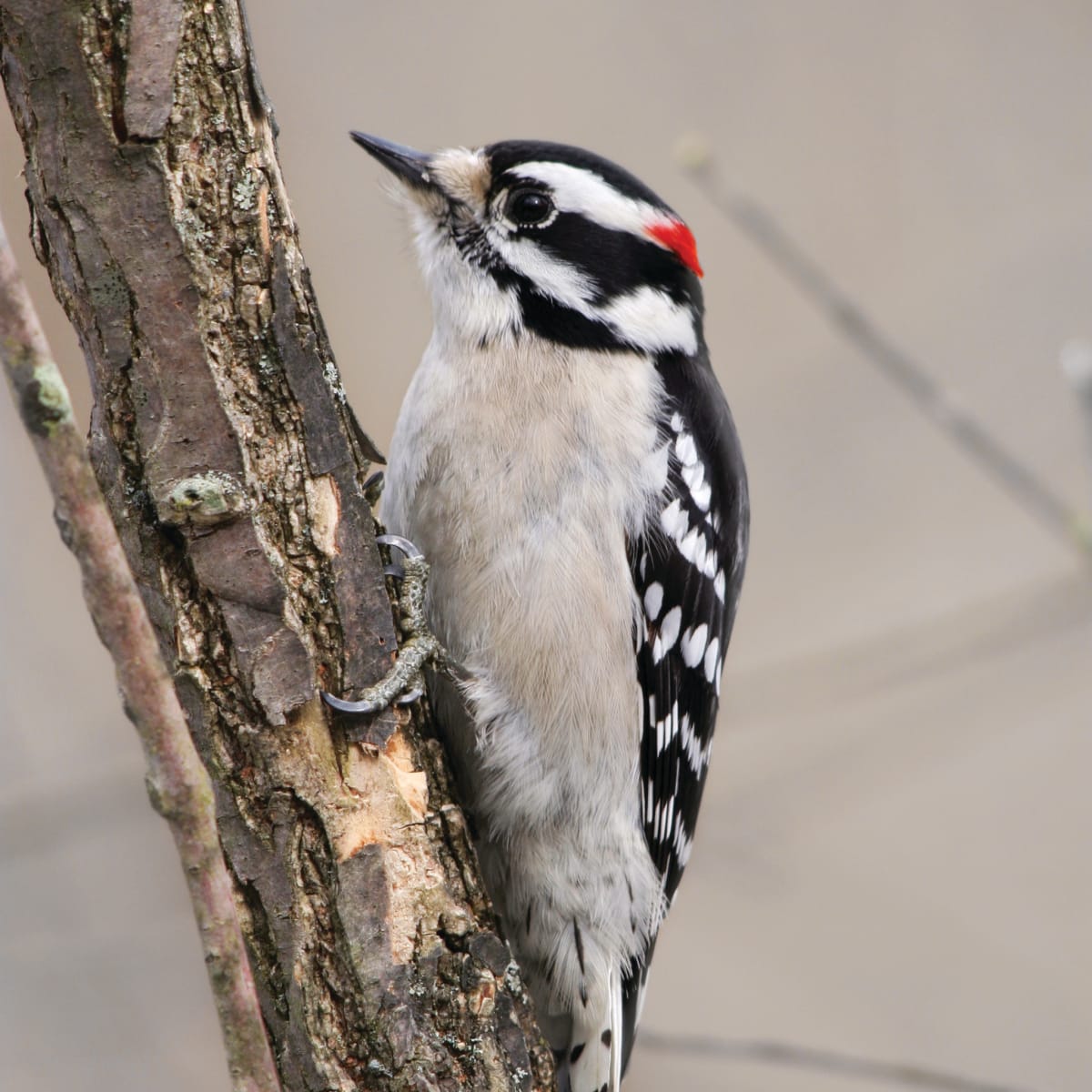

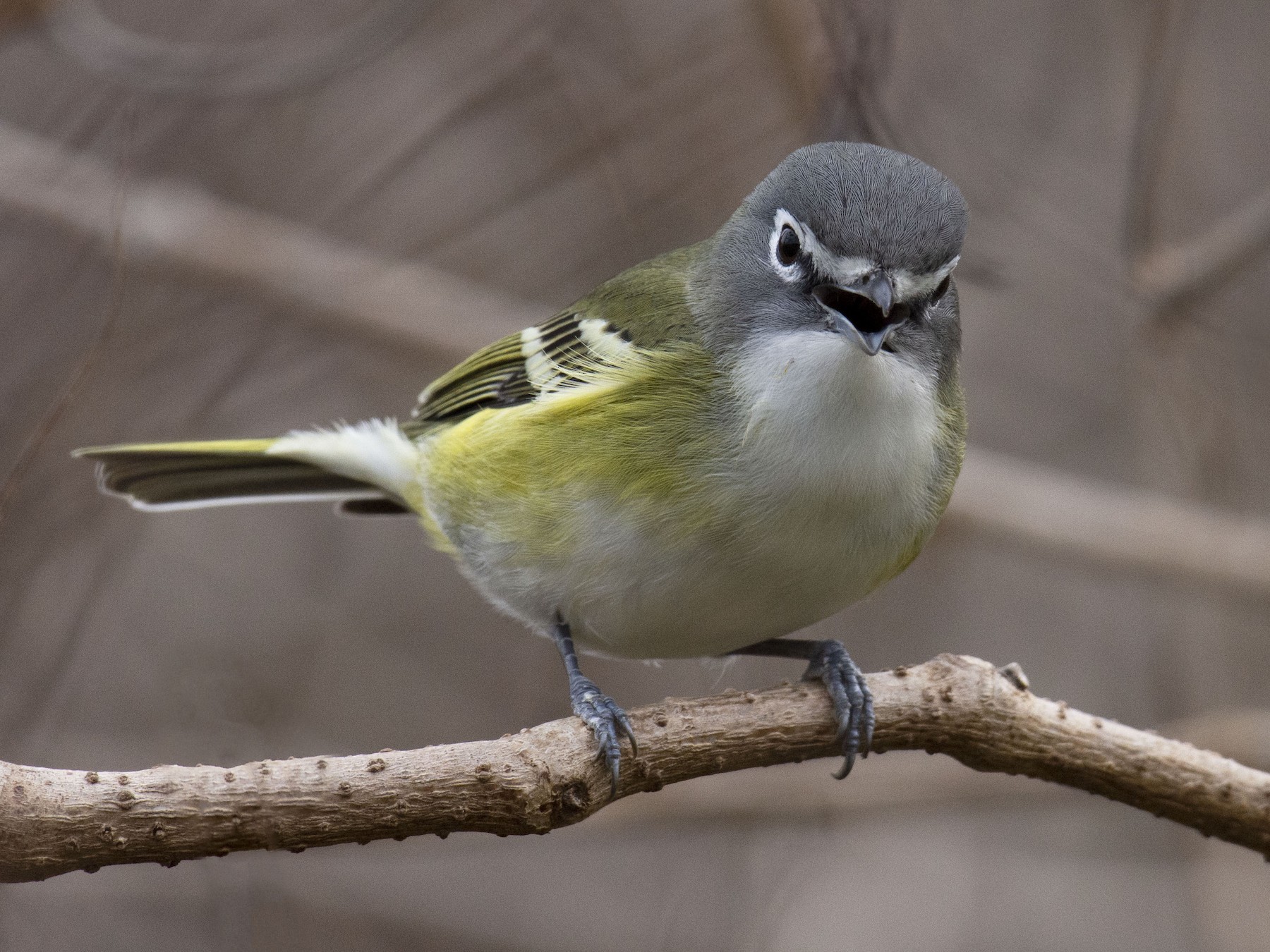
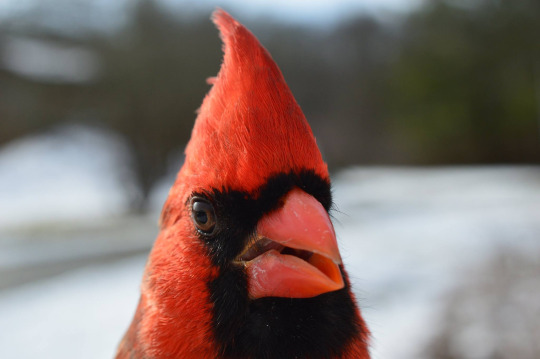

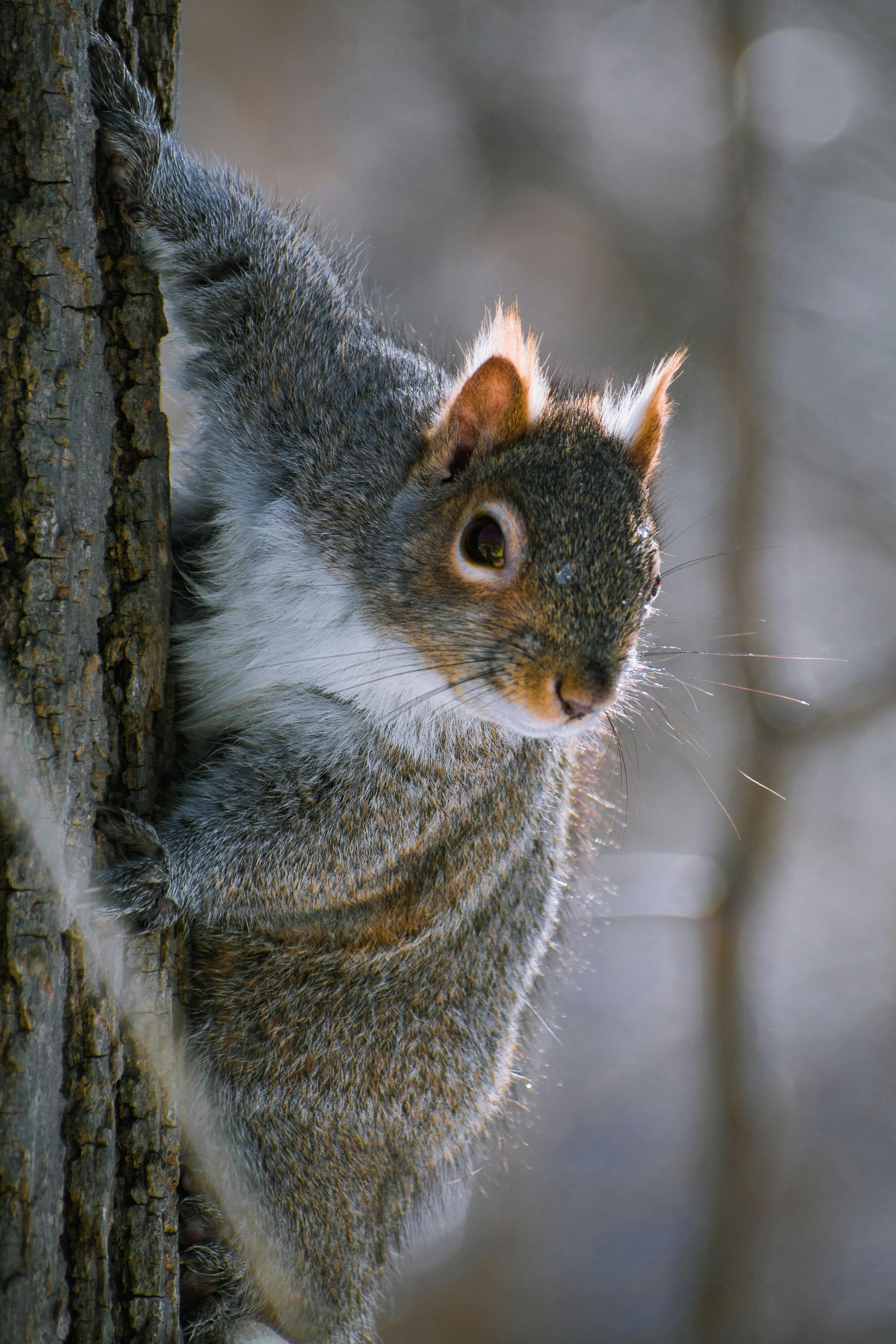


Courses Developed & Taught
Current courses
- WIS 4934 Wildlife Behavior and Conservation - Fall
- WIS 5496 Research Design in Wildlife Ecology & Conservation - Fall
- WIS 4547c Avian Field Research – Spring
Past courses
- WIS 4/6934 Ancient Bird Language for Modern Naturalists (field course in animal behavior)
- WIS 6934 Networking Women in Sustainability Science (online course)
- WIS 3403c Perspectives in Wildlife Ecology and Conservation
- WIS 4934-Honors / Becoming Ecological Natives in the Anthropocene
- Research Design in Conservation Biology – 1 week short course, Co-taught with Lyn Branch in Acre, Brazil; with Nilmini Jayasena and Fangyuan Hua in Kandy, Sri Lanka
- Design of Social-Ecological Research Studies – 1 week short course Co-taught w/ Mickie Swisher (UF) in Argentina; and for OTS in Costa Rica.
- Natural Resource Conservation; Wildlife Ecology and Management; Ornithology; Conservation Biology
- Biodiversity Conservation: Global Perspectives; Field Ecology; Attaining a Sustainable Society; Resilience in Living Systems
Sieving Lab Alums (& current activities).
Post-Docs
- Dr. Leila Kalantari, Post Doc (2018-20). Machine learning algorithms applied to acoustic data retrieval (UF Informatics Fellow).
- Dr. Rajeev Pillay, Post Doc (Summer 2016). Regional variation in vocal complexity in Paridae (NSF).
- Dr. Dara Wald, Post Doc (Spring 2013). Taught “Networking Women in Sustainability” (NSF). Asst. Professor, Iowa State U.
- Dr. Thomas A. Contreras, Post Doc (2002-2006). Ecology of winter flocks (USDA, NSF). Professor, Wash-Jefferson U.
- Dr. Kevina Vulinec, Post Doc (2000-2002). Fire ecology and restoration (USDA). Professor, Delaware State University.
- Dr. Joan Morrison, Post Doc (1999). Ecology of nest predators (Ford Foundation.) Professor (retired) Trinity College.
Ph.D.
- Dr. Demeng Jiang, PhD. Visiting Scholar (Guangxi U, Nanning, China; 2019-20). Seasonal variation in social information. Now post doc at Peking University.
- Dr. Kristen Malone, PhD. 2019. Effects of large-scale hardwood reduction on bobwhite and Bachmann's sparrow populations. Post doc at Mizzou.
- Dr. Rosalyn Johnson, Ph.D. 2016. Native bee communities and pollen foraging in organic farm-scapes. CEO, YardBio.org.
- Dr. Willandia Chaves-Didier, Ph.D. 2016. Wildlife trade, hunting, and game consumption in the Amazon. Assistant Professor at Virginia Tech University.
- Dr. Andrea Larissa Boesing, PhD. Visiting Scholar (University of Sao Paulo, Brazil; 2015-16). Landscape ecology of functional insectiviory in agroecosystems.
- Dr. Jackson Frechette, Ph.D. 2014. Apes, seed dispersal, tropical tree regeneration. Flora and Fauna International, Cambodia.
- Dr. Sangham Rana, PhD. Visiting Scholar (Arid Agriculture University, Rawalpindi, Pakistan; 2014).
- Dr. Fangyuan Hua, Ph.D. 2013. Forest degradation and bird conservation. Post-docs: (1) Princeton, (2) Cambridge. Faculty at Peking University, Center for Ecology.
- Dr. Eduardo Silva, Ph.D. 2012. Chilean wildlife conflicts w/ domestic carnivores. Faculty Universidad Austral, Valdivia, Chile.
- Dr. Iván A. Díaz, Ph.D. 2008. Epiphyte–bird interactions in Chilean rainforest. Faculty Universidad Austral, Valdivia Chile.
- Dr. Matthew J. Reetz, Ph.D. 2008. Invasion of brown-headed cowbirds in Florida. ED for Madison WI Audubon Society.
- Dr. Traci D. Castellón, Ph.D. 2005. Avian landscape ecology and sustainable patch networks. Biologist, FFWCC.
- Dr. John J. Kappes, Ph.D. 2004. Heterospecific use of red-cockaded woodpecker cavities. Independent consultant.
- Dr. Gregory A. Jones, Ph.D. 2003. Integrating bird conservation and farming. Faculty Santa Fe College, Gainesville, Florida.
M.Sc.
- Yue Liu, MSc. 2020. Effect of construction noise on Eastern Bluebird reproductive biology.
- Pete Monte, MSc. 2020. Parid leadership in predator mobbing dynamics.
- Jin Bai, MSc. 2019. Factors affecting avian aggression across the urban-wildland interface.
- Sarah Obaid, MSc. 2018. Avian acoustics in different habitats.
- Mary Mack Gray. MSc. 2019. Personality variation in brown-headed nuthatch populations.
- Bobbi Carpenter, MSc. 2019. Predicting nesting stage in wild turkey hens using spatial signature.
- Harrison Jones, M.Sc. 2016. Traits and factors predicting reliance on socially derived anti-predator information in winter flocking species. Starting UF PhD Biology Fall 2016.
- Aaron Grade, MSc. 2015. Soundscape ecology: avian information restriction caused by road noise. Starting a PhD in Fall 2015 at U Mass, Amherst.
- Kaan Kerman, MSc. 2015. Behavioral syndromes in an invasive species, Monk parakeet. Starting a PhD in Fall 2015 at Virginia Tech, Blacksburg.
- Barbara Arakaki, MSc. Visiting Scholar (Univ Brasilia, Brazil; 2014). Tropical forest bird community structure.
- Amanda Abel, MSc. 2014. Florida scrub jay landscape ecology; patch occupancy and barriers to movement in Ocala Nat’l Forest. GIS Analyst, Quest Ecology, FL.
- Elizabeth White, MSc. 2014. Florida scrub jay anti-predator behavior. Currently PhD student in SNRE/WEC.
- Ping Huang, M.Sc. 2010. Effects of social information on bird exploratory behavior. Doctoral student in Biology, U Florida, with Collette St. Mary.
- Willandia Chaves-Didier, M.Sc. 2009. Wildlife and logging in Acre, Brasil.
- John J. DeLuca, M.Sc. 2008. Are farms ecological traps for Eastern Bluebirds? USDA Forest Service.
- Stacia A. Hetrick, M.Sc. 2006. Vocal signaling of risk by tufted titmice. With FFWCC; private consulting.
- Michael P. Milleson, M.Sc. 2005. Modeling mechanisms of arrested succession in south-temperate rainforest. Wildlife Disease Biologist at Florida Field Station -- Wildlife Research (USDA), Gainesville, FL. (Lab page).
- Leonard Santisteban, M.Sc. 2001. Use of sensory cues by selected avian and mammalian nest predators. PhD, New Mexico State University, 2009.
- Matthew Reetz, M.Sc. 2000. The effects of predator identity and capability on nest defense by songbirds. (See above).
- Heather McPherson, M.Sc. 1999. Distributional constraints of the ochre-flanked tapaculo, Eugralla paradoxa. Biologist, Washington State Department of Natural Resources.
- Diana Swan, M.Sc. 1999. Nesting ecology of three woodpecker species in north Florida longleaf pine forest. Biologist, Georgia Department of Natural Resources.
- Brian D. C. Williams. M.Sc. 1998. Distribution, habitat associations, and conservation of CA purple martins. Consultant: Williams Wildland Consulting, and adjunct Faculty with Sierra College, California.
- Gerard J. McChesney. M.Sc. 1997. Breeding biology of the Brandt’s cormorant on San Nicolas Island, CA. Seabird biologist with USFWS in California.
B.Sc.
- Sean Manz, MSc. WEC. Non-lethal avian deterrents (lasers). Funded by USDA/UF.
- Odile Maurelli, MSc. WEC. Female incubation behavior in response to noise.
- Sylvia Van Boskirk, BSc/MSc (combined degree). Heterospecific audience effects on parid alarm call production.
- Hannah Cain, BSc. Bluebird nesting behavior under risk-disturbance.
- Hannah Henry, BSc. Heterospecifc versus conspecific audience effects on parid alarm calls.
- Pedro Lopez, BSc. Trends in Prairie Creek Banding Lab data (Audubon Intern).
- Kuangying Chen, BSc. Research volunteer.
- Brian Stokes, BSc. Research volunteer. Acoustics analysis.
- Gabriel Gonzalez, BSc. Research volunteer, Prairie Creek Banding assistant.
- Isabella Plummer, BSc. Research volunteer. Nest site selection by urban Eastern bluebirds.
- Camya Robinson, BSc. Research volunteer. PhD EEB program, Princeton.
- Zach Holmes, BSc. G.R.E.B.E. president and research volunteer. MSc student WEC/UF
- Izzy Garcia, BSc. G.R.E.B.E. officer and research volunteer. Biological technician, UF.
- Jennifer Franklin, BSc. Research volunteer. Currently in MA program UCF.
- Odile Maurelli, BSc. Grad Cornell U, Research volunteer.
- Jonathan Argov, BSc. Research Technician. Avian acoustics. MSc student U Wyoming.
- Brittany Panos, BSc. Bioacoustics volunteer. Biologist Audubon Pennsylvania.
- Adriana Betancourt, BSc. Sparrow nest predation. White Oak Intern, AmeriCorp Program Director.
- Tannyr Lamica, BSc. Honors 2017. Interactive playback reveals aggressive escalation in vocalizations of tufted titmouse. Biological Science Technician, USFS.
- Lauren Diaz, BSc. In WEC, former NSF-funded research technician. PhD student, Oregon State.
- Jason Lacson, B.Sc. Honors 2015. Design of a camera trap for owls and other raptors using passerine distress calls. PhD candidate ASU.
- Jordon Davis, B.Sc. 2015. Distance, noise, and habitat complexity effects on spectral tag detection efficiency for parid vocalizations. Working as a technician.
- Julie Perreau, BSc Honors 2014. Bluebird reproductive responses to different nest boxes and temperature. Post Doc, University of Texas.
- Amanda Powell, BSc Honors. 2013. Bluebird reproductive responses to perceived predation risk. Working lots of field jobs.
- Michael Bainum, BSc. 2013. Feral cat camera trapping in urban environs. Working lots of interesting jobs. Published his thesis!
- Jessica Burnett, B.Sc. 2012. Testing whether actual and perceived landscapes of risk align. Completed MSc in WEC. Works for USGS, biologist.
- Kelly Frye, B.Sc. Highest Honors. 2012. Social interactions and homing behavior. Veterinarian.
- Chelsea Heatherington, B.Sc. Highest Honors. 2011. Homing behavior in forest birds. NSF GF.
- Derrick Thrasher, B.Sc. Honors. 2011. Painted bunting habitat use in Florida. Recipient NSF GF. Sr. Global Training & Development Scientist at Illumina, CA.
- Chloe Wright, B.Sc. Honors. 2010. Predation risk and bluebird reproductive behavior. PhD Candidate, UBC.
- Montana Atwater, B.Sc., Highest Honors. 2008. University Scholar. Native Dragonflies as Ag Pest-Consumers. MSc in UF Entomology; Now PhD abroad..
- Scarlett Howell, B. Sc. Highest Honors. 2006. Functionally referential signals in birds. USFWS Biologist, San Diego, California.
- Elizabeth Farley, B. Sc. Highest Honors. 2004. University Scholar. Characterization of winter bird flocks. MSc, University of Texas at Tyler, 2009. Doing PhD Texas Tech.
- John Davis, B.Sc. Highest Honors. 2002. University Scholar. Defense of roosting cavities by RCWs. Doctoral Program at UGA Ecology; NSF Graduate Fellow. Post doc at Idaho State Stream Ecology Center. Now works for the feds in Atlanta.
- Justin Gude, B.Sc. Highest Honors. 2000. Bird-assisted restoration of south-temperate rainforest. M.Sc. Montana State University (NSF Graduate Fellow); Biologist with State of Montana.
- Kimberly L. Maute, B.Sc. Honors. 1999. Forest boundary crossing by mobbing passerines. Finished dissertation in Australia.
- John P. Justus, B.Sc. Honors. 1998. Nest predation pressures along inherent oak-pine forest boundaries. Attended University of Colorado School of Law on a Merit Scholarship. Associate, Buchanan & Sperling, Colorado, USA.
- Gary M. Langham. B.Sc. Honors. 1995. Pishing and Parids: a holarctic scolding homology. VP and Chief Scientist for National Audubon Society, Washington DC. President of Neotropical Grassland Conservancy. http://www.conservegrassland.org/ngc_staff.htm.
Heading
Lorem ipsum dolor sit amet, consectetur adipiscing elit, sed do eiusmod tempor incididunt ut labore et dolore magna aliqua. Ut enim ad minim veniam, quis nostrud exercitation ullamco laboris nisi ut aliquip ex ea commodo consequat. Duis aute irure dolor in reprehenderit in voluptate velit esse cillum dolore eu fugiat nulla pariatur. Excepteur sint occaecat cupidatat non proident, sunt in culpa qui officia deserunt mollit anim id est laborum.
Morbi odio orci, bibendum at suscipit vel, elementum eget velit. Nunc tristique lectus in dui fringilla eleifend. Maecenas vitae enim odio. Donec sollicitudin massa ac justo euismod, vitae consectetur augue dictum. Class aptent taciti sociosqu ad litora torquent per conubia nostra, per inceptos himenaeos. Sed finibus leo ac ex accumsan accumsan. Pellentesque quis porta lorem, eu ultrices velit. Aliquam erat volutpat.
Links
- section link
- external link
- media link
